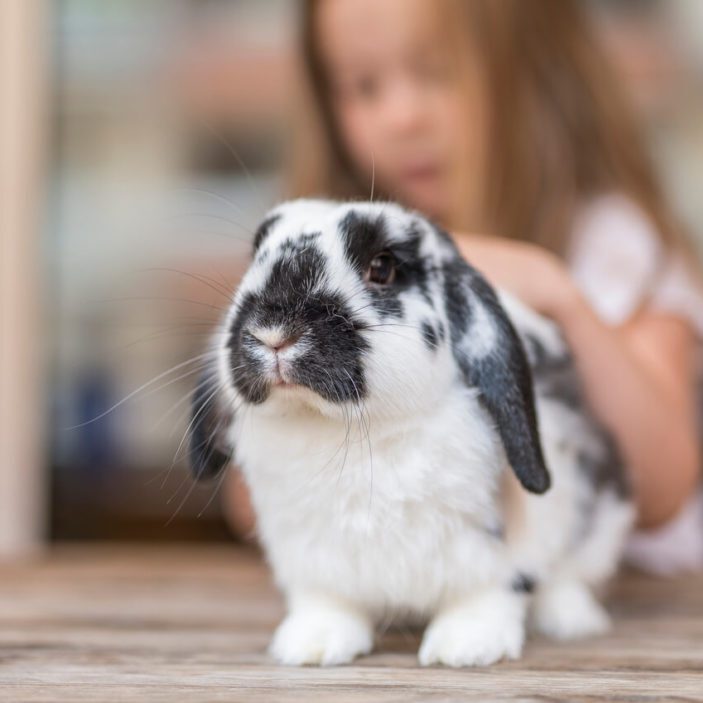Pets 101
What to Know Before You Choose a Pet Food

By: Dr. Lindsey Bullen a Board Certified Veterinary Nutritionist ® in North Carolina
My job as a veterinary nutritionist, and as an expert in metabolism and biochemistry, is to ensure that pet parents (myself included) are feeding the best diets to their pets.
This means making sure pets get the appropriate concentration and proportion of essential nutrients so that they have a happy, healthy, and long life with their pet parents.
Carnivores v. Omnivores: Are Dogs and Cats the Same?
While it is true (and proven) that cats are obligate carnivores, contrary to popular opinion, dogs are in fact omnivores.
That’s right, dogs are not carnivores, which means their protein (and other) needs will be different than a cats.
A lot of people take that to mean that the cat then has to have an all-meat diet, and that isn’t true at all. Yes, cats should have animal protein in their diets.
However, they also have other nutritional idiosyncrasies, which are things that make then unique (in addition to their vast personalities, of course), that naturally come directly from animal tissues as well.
This is just one of many aspects that make then different from their canine counterparts.
Pet Food Research Breakthroughs: The Journey of Taurine
When humans started manufacturing pet food, the challenge was that a lot of research had not been done regarding how ingredients play together.
Unfortunately, diet formulation is not just A+B=C; it’s A+B multiplied by some digestibility factor(s), processing factor(s), and stabilization factor (plus a handful of other factors).
For example, some ingredients become degraded during processing and/or are less available for use by the dog or cat when mixed with others.
A great example of that is taurine. Taurine is an amino acid that is found naturally in certain animal tissues.
Dogs don’t have to have a dietary source of taurine because they can make it themselves from its precursors.
While cats can make small amounts of it, they have so many different essential needs for taurine that their body doesn’t make enough of it to meet metabolic demands.
They have to have taurine-rich ingredients (or added taurine) in their diet to support their retinal development in their eyes, their heart health, and many other things.
Before this nutrient requirement was known, and thus before taurine was added to commercial feline diets, many cats fed commercial diets developed significant health problems.
One interesting thing to note is the amount that needs to be added to a dry diet is about half of that that needs to be added to a canned diet because taurine is reduced/ degraded and less available due to the (necessary) processing methods.
Through research, we have determined:
- Which animals have a true taurine requirements.
- The minimum appropriate levels of taurine to add to commercial pet food
- The diet form affects recommended content (Form makes a big difference!)
All of these research breakthroughs have helped us get one step closer to determining the best nutrient profile for our beloved pets.
Can Pets Digest Corn?
Yes! Our jobs as veterinary professionals, but also our jobs as pet parents, is to do no harm.
It can be devastating when we make decisions with the best of intentions (but with minimal information or misinformation) and something bad still happens.
One of the things that is really important for pet parents to know is that both dogs and cats can actually metabolize and utilize carbohydrate/grain ingredients, corn included.
I often ask my clients why they feel corn is so bad? This sounds pretty gross, but the funny thing is we all eat it on July 4th, but then we see it the next day in our poop.
Pet parents automatically assume that corn is not digestible because of this. Really, we are just seeing the fibrous shell of the corn in the poop; but the body can digest the starchy center.
While it is true that cats and dogs don’t really chew their food (at least like we do/ should), the benefit of using a complete and balanced commercial product is that they are mechanically processed to break through that fibrous outer coating and release all of the wonderful nutrients that are inside all of the ingredients.
While every pet is unique, and ingredient intolerances can happen, for the majority of pets, there is no harm in eating a grain such as corn.
Every Pet Is Unique
One very important thing to keep in mind is that every pet is unique. Some animals might do very well on a “chow” diet.”
Others may need a higher quality product because they have more sensitive GI tracts.
You just don’t know what that pet’s health (and thus exact nutrition needs) is going to be like during their life, which is one reason why partnering with your veterinarian is so important.
Most pets should expect to be on a growth diet and then an adult maintenance diet at some point (both of which have minimum established levels developed and published by the Association of American Feed Control Officials[AAFCO]).
While there isn’t currently a “geriatric” nutrient profile from AAFCO, ideally there will be one in the near future.
Right now, “geriatric” is just based on the company’s individual philosophies.
As our beloved pets age, it is likely that they’re going to develop some form of organ dysfunction, which could require a prescriptive diet in their future.
Without the development of a positive, respectful, and supportive relationship with their veterinarian, pet parents are less likely to be able to ensure that they are feeding their pets appropriately.
So Many Brands to Choose From…Which One Is Right for Your Pet?
The truth is that pet food manufacturing (and more specifically marketing) has vastly out competed, outrun science.
There are a lot of the products that we see today whose formulations are based primarily (if not solely) on fads, with minimal to no associated research.
While nutrients (and optimal nutrition!) are the thing that absolutely can support a healthy life and disease treatment, if there’s a claim that’s too good to be true, it probably is.
If a diet claims to cure cancer, it most assuredly doesn’t (unless it is laced with chemotherapy… which also is not a thing). At least not yet!
When choosing the right pew food, it’s hard to wade through the tantalizing ads, competing claims, and the shiny.
If you want to know what to put in your pet’s bowl, talk to your veterinarian about a recommendation.
Discuss where you plan on buying it: grocery store? Feed store? Boutique shop? If your pet has more tailored needs, consider working with a Board Certified Veterinary Nutritionist ®.
Either way, communication and collaboration with your vet is going to be the best way to get you pup on what they need!
Remember, healthy pets visit vets!
Did you find this helpful? Share it!
Recent Posts
About VetScoop
Pets make our lives better. At VetScoop, we’re on a mission to return the favor by giving you access to trustworthy, science-based information so you can provide the best possible care for your pets.
Related Posts We Think You'd Like





